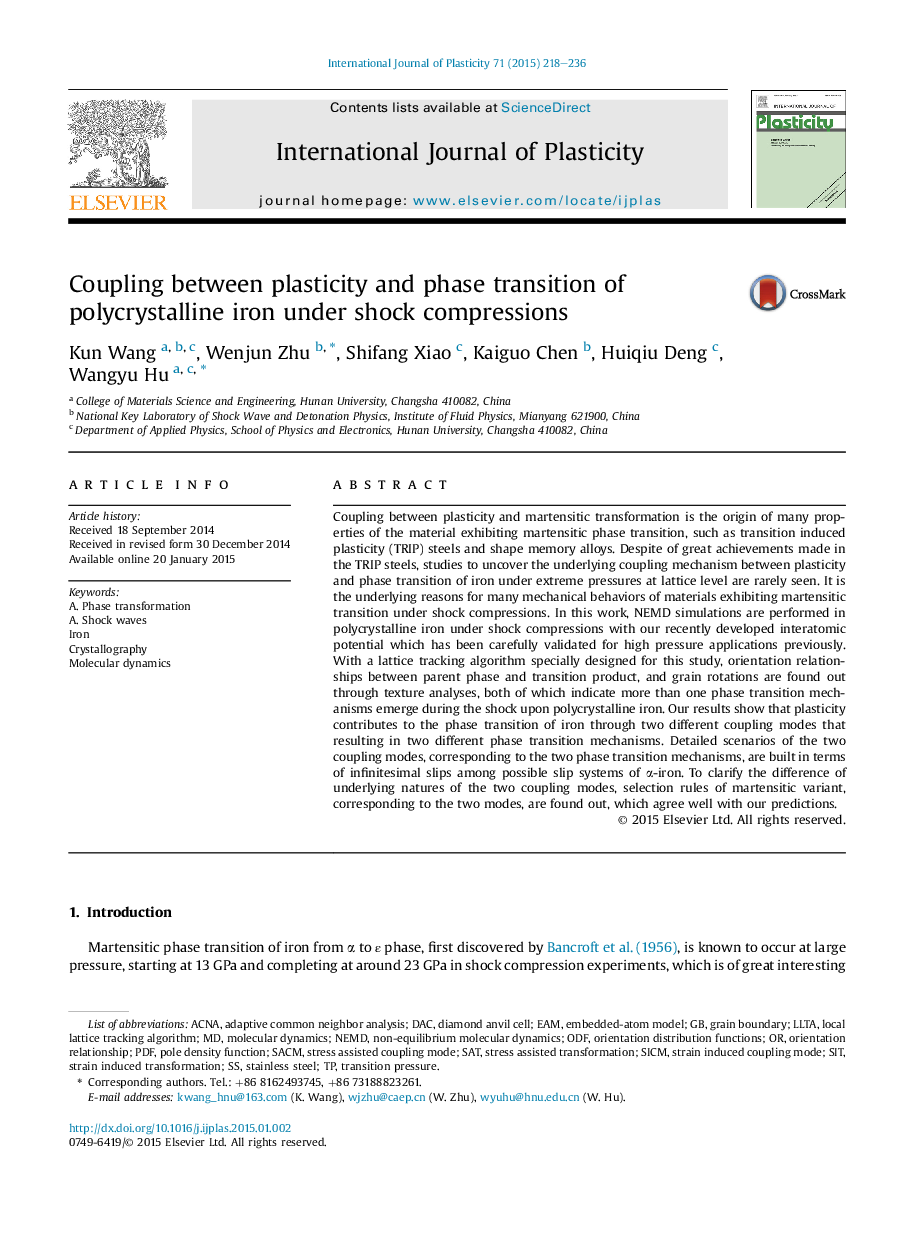| Article ID | Journal | Published Year | Pages | File Type |
|---|---|---|---|---|
| 786096 | International Journal of Plasticity | 2015 | 19 Pages |
•We design a novel lattice tracking algorithm for shock compressions. Plasticity could contribute to phase transition by stress assisted or strain induced mode. Both of the two coupling modes can emerge during the shock upon nc iron. Comparison of the two modes is made within the scope of atomic simulations. Variant selection rules of the phase transition are found for the two modes.
Coupling between plasticity and martensitic transformation is the origin of many properties of the material exhibiting martensitic phase transition, such as transition induced plasticity (TRIP) steels and shape memory alloys. Despite of great achievements made in the TRIP steels, studies to uncover the underlying coupling mechanism between plasticity and phase transition of iron under extreme pressures at lattice level are rarely seen. It is the underlying reasons for many mechanical behaviors of materials exhibiting martensitic transition under shock compressions. In this work, NEMD simulations are performed in polycrystalline iron under shock compressions with our recently developed interatomic potential which has been carefully validated for high pressure applications previously. With a lattice tracking algorithm specially designed for this study, orientation relationships between parent phase and transition product, and grain rotations are found out through texture analyses, both of which indicate more than one phase transition mechanisms emerge during the shock upon polycrystalline iron. Our results show that plasticity contributes to the phase transition of iron through two different coupling modes that resulting in two different phase transition mechanisms. Detailed scenarios of the two coupling modes, corresponding to the two phase transition mechanisms, are built in terms of infinitesimal slips among possible slip systems of α-iron. To clarify the difference of underlying natures of the two coupling modes, selection rules of martensitic variant, corresponding to the two modes, are found out, which agree well with our predictions.
